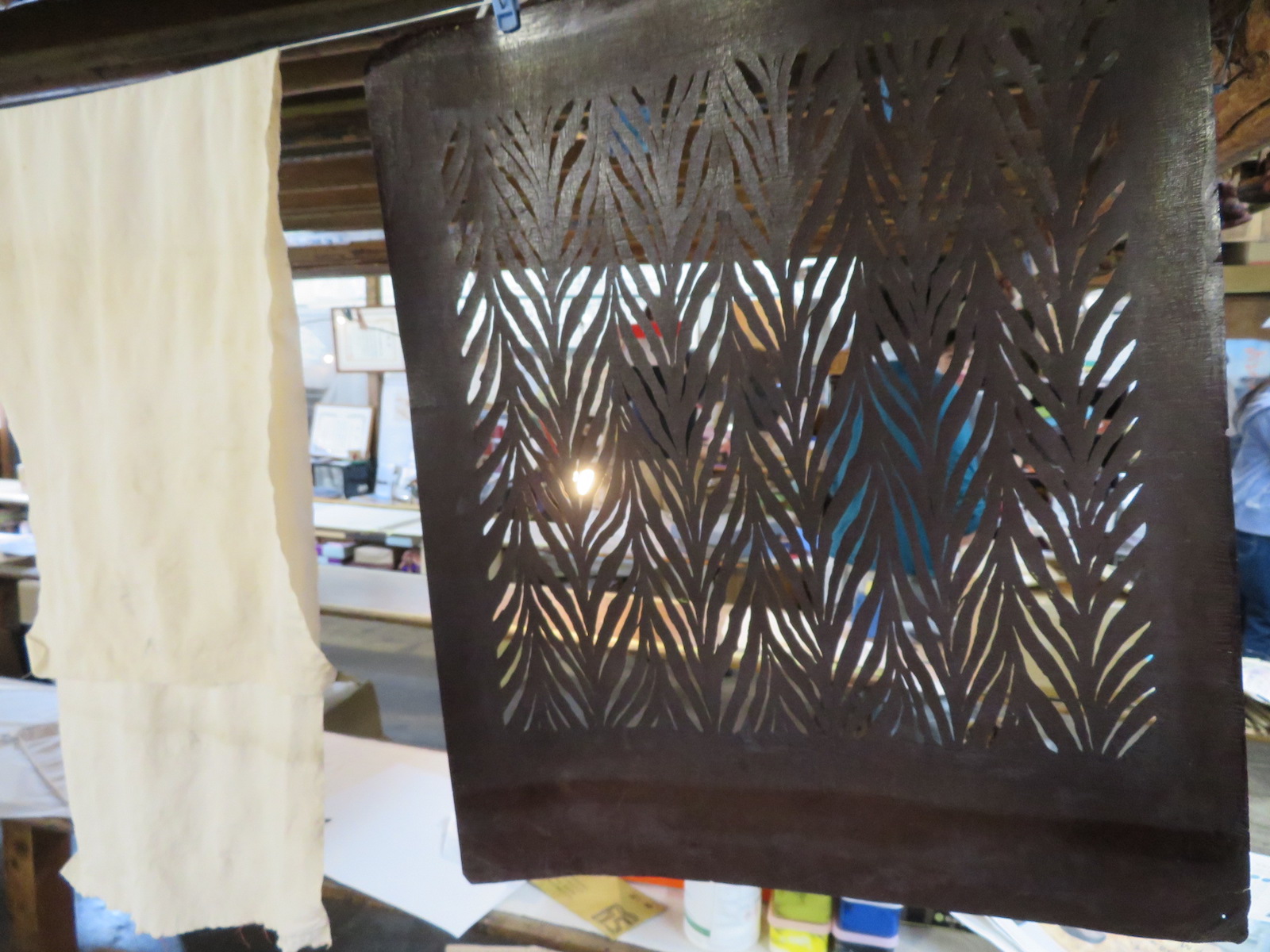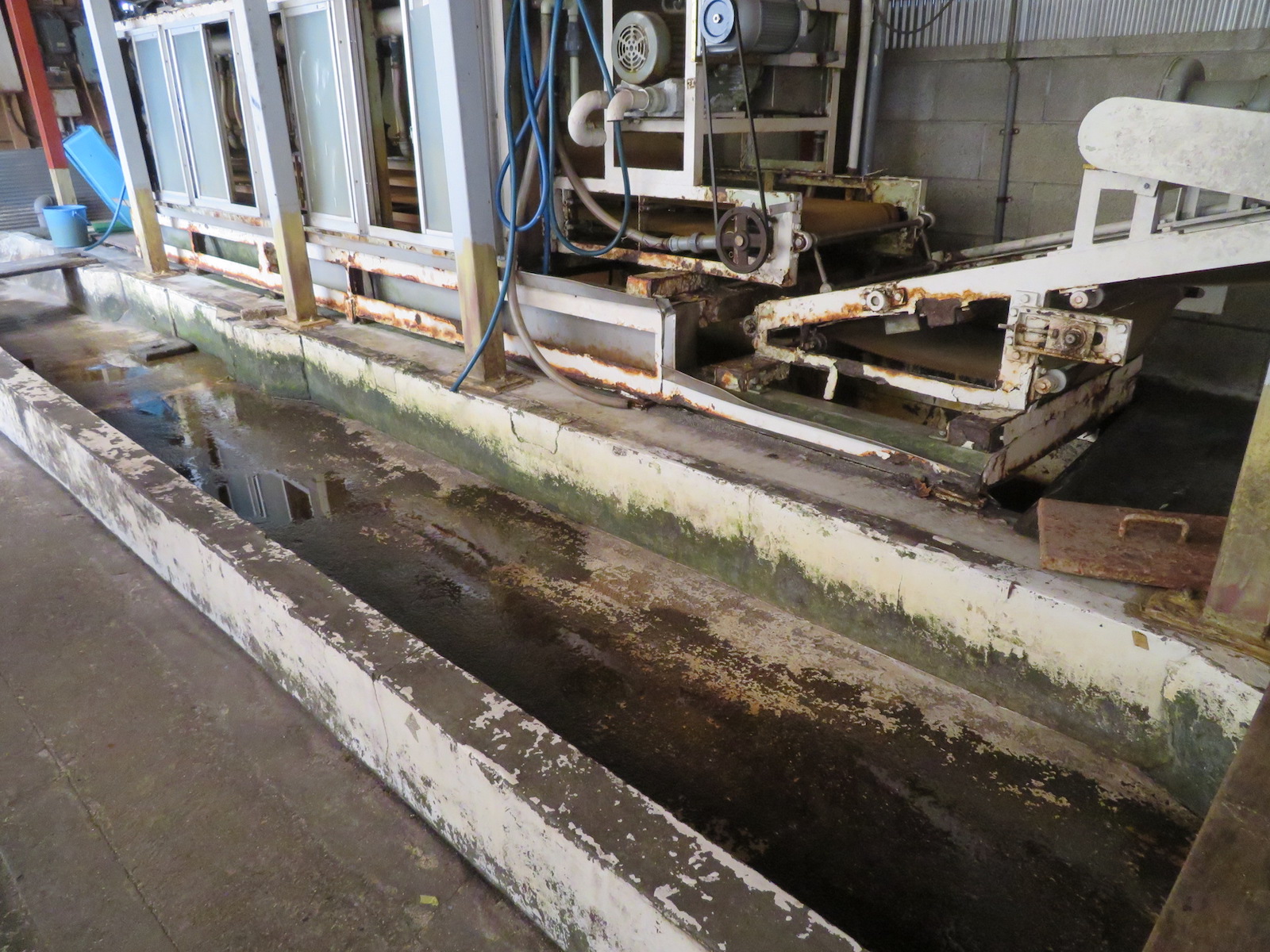Tokyo's image is bright flashing lights and thronging crowds, a thoroughly modern metropolis. But as a city with over 400 years of history, there are plenty of quiet alleyways that equally tell various aspects of the city's story. This time of year, one corner of Tokyo celebrates the history and efforts of the cloth dyers that kept the city's population clothed throughout the 20th century and continue to ply their craft even today.
The fabrics used to make kimono, the Japanese national dress, are exquisitely dyed and decorated, even if they are meant for every day use. During the Edo Period, when flamboyant dress was banned, it became popular to dye fabric with tiny patterns that appeared from a distance as a single color. This was known as Tokyo Komon.

After the Japanese capital of Edo became known as Tokyo (ie, from the 1860s), Tokyo Komon continued to be popular, but now larger patterns and a wider variety of colors, a type of dyeing known as sarasa, also became popular. With Tokyo's population growing rapidly, there was high demand for attractive kimono fabrics in the capital. Many craftsmen relocated from the traditional craft centers of Kyoto and Kanazawa to be closer to their customers and thus better able to serve their needs.
By the early 20th century, Tokyo's population had burgeoned; the center of the city was crowded and polluted. Cloth dyers (some-ya) in the city center near Asakusa, Kanda or Nihonbashi found they could no longer get the clean water they needed for their work. Many relocated to an area along the banks of the Kanda river and its tributary, the Myoshoji River, in what is now the northern part of Shinjuku-ku (Takadanobaba and Ochiai), where they continue to work to this day.
Even in our modern times, traditional fabric dyeing tends to be a cottage industry comprised of small workshops or studios where fabric designs are painstakingly handcrafted. If you were just walking through the neighborhood, you might not even recognize that there was any such work going on. Fortunately, every Autumn, several of the some-ya of this area open their doors to visitors in what they call the Konya Meguri (Dyer's Tour). The eastern shops were open from Oct 23 to Oct 27; the west will be open from Oct 30 to Nov 3.
Nine workshops in the western area are participating (map), each with different opening days and hours. Yoshizawa Yunoshi and Some no Sato Futaba-en, the largest establishments, are both open daily. All nine are open on Nov 2 and seven are open on Nov 3. Download the schedule (in Japanese) here. Many are offering hands-on experiences (for a fee), although this often requires advance reservations, as small workshops have limited capacity.
Since many of the studios are cleverly disguised as ordinary homes, each of the open studios will fly a purple flag to help visitors find them.

When visiting multiple workshops, visitors learn that there are many types of fabric dyeing going on. In each case, multiple steps are required, sometimes with different craftsmen specializing in different steps and the fabric moving from shop to shop as it is processed.
For example, Tokyo Komon and sarasa both involve stencil printing patterns onto fabric. Often the dyeing is done to fill a customer's order for a specific pattern in a specific color.

First stencils must be prepared, usually cut into heavy washi paper that lasts for about 100 printings. Then dyes must be prepared in the desired color. While most dyes today use chemicals, getting exactly the right color still requires great skill. These dyes then are blended with the nori starch (usually made of rice flour) that will be spread onto the stencil that has been placed over the fabric to transfer the pattern. After this, the base color is added to the entire bold of cloth, usually about 12 meters long. Steaming in a specially-designed steam box helps to set the dye and then the entire bolt of fabric is washed to remove the nori starch.

When the dyers moved to this area, the washing was done in the clean waters of the Kanda and Myoshoji Rivers. The sight of 12-meter streamers of cloth in the flowing waters of the river in those days must have been spectacular! Today, washing cloth in the river is no longer permitted (and probably not desirable either, since both rivers now include urban rain run off). Instead, workshops use well water (chlorinated tap water would ruin the dye) and have long troughs where the washing takes place. In the final step the fabric is air dried.

Yuzen is a form of dyeing that involves hand painting dyes directly onto cloth, usually coloring in lines that have been hand-drawn using wax or nori (natural/soluble glue). Tokyo craftsmen tend to use the Kanazawa style of yuzen dyeing (which is slightly different from that used in Kyoto). Yuzen can be used to create entire kimono that are works of art, but is also a popular craft in small medallion designs that are used to produce a variety of small accessory pieces.

A style of dyeing many might not think to associate with Tokyo at all is suminagashi, known in the West as marbling. While there is some contention over whether this style of dye began in Japan and moved west, or whether it began around Turkey and moved both east and west, it has become a traditional craft in many cultures. It involves placing drops of dye onto slightly gelatinized water, tracing through the drops with string, a stick or a rake to produce the marbling pattern and then placing cloth stretched on a frame onto the surface to pick up the pattern.
Embroidery, adding family crests at the back and shoulders of kimono, other forms of painting onto silk, and even re-dyeing or stain removal to freshen used fabrics are all among the crafts still practiced in this area.

One of the leading workshops of the area is the Tomita Dye Craft Gallery, also known as the Tokyo Some Monogatari Museum. Although it is in the "east" for purposes of the Dyer's Tour (located on the banks of the Kanda River a few minute's walk from Omokagebashi on the Toden Arakawa Line), in fact, it is always open to the public on weekdays and the third Saturday of the month from 10 to 12 and from 1 to 4.

Visitors can get a quick tour, with some English signboards to help with understanding, and can even try their hand at stencil dyeing (eg, canvas tote bag: 2,500 yen). Tomita-san, the proprietor, explained to me that when the workshop was opened at this location by his grandfather in 1914, there were 50 dyers along the river in this area. His is the only workshop remaining in the district today, and he is determined to ensure its survival.
Of course, that is the whole point of the Dyer's Tour, to promote understanding and appreciation of Tokyo's traditional dye craft so that it can continue to thrive.
Vicki L Beyer, a regular Japan Today contributor, is a freelance travel writer who also blogs about experiencing Japan. Follow her blog at jigsaw-japan.com.
© Japan Today Take our user survey and make your voice heard.
Take our user survey and make your voice heard.















2 Comments
Login to comment
JMW47
Why does the author use the word "Konya" in the title, and then not define it anywhere in the article?